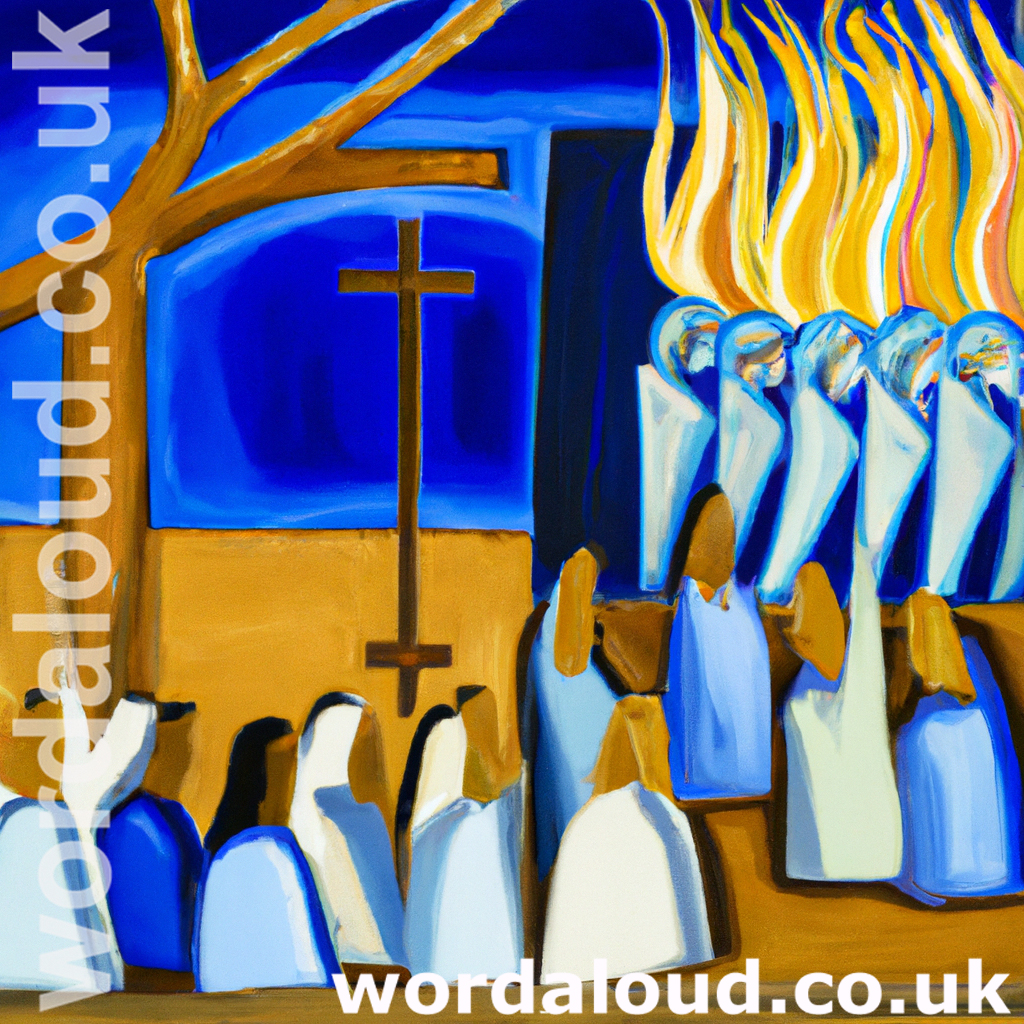Christian Art | George Herbert | Sepulchre | The Church | The Windows
George Herbert | The Temple | The Church | The Windows
Lord, how can man preach thy eternall word?
He is a brittle crazie glasse:
Yet in thy temple thou dost him afford
This glorious and transcendent place,
To be a window, through thy grace.
But when thou dost anneal in glasse thy storie,
Making thy life to shine within
The holy Preachers; then the light and glorie
More rev’rend grows, and more doth wine
Which else shows watrish, bleak, and thin.
Doctrine and life, colours and light, in one
When they combine and mingle, bring
A strong regard and aw: but speech alone
Doth vanish like a staring thing,
And in the eare, not conscience ring.
![]()

George Herbert | The Temple | The Church | The Windows
Herbert’s poem focuses on themes of divine grace, human frailty, and the role of a preacher as a vessel for God’s light and truth. The poem is built around the metaphor of a preacher as a glass window through which God’s grace and truth can shine. It explores how the preacher’s life and message must be unified effectively to convey God’s word to others.
The first stanza establishes the paradox of human inadequacy and divine calling. Herbert describes man as a ‘brittle crazy glass’, emphasizing the fragility and imperfections of human nature. Despite this, God grants preachers the ‘glorious and transcendent place’ of being His instruments, reflecting God’s grace. This contrast highlights God’s transformative power, taking the weak and flawed and elevating them to serve God’s purposes.
In the second stanza, Herbert deepens the metaphor by describing the process of ‘annealing’, a technique in glassmaking where heat strengthens and purifies glass. When God ‘anneals in glass’ His story, the preacher becomes more than a passive conduit; rather, he embodies life and teachings of Christ. This process allows the preacher’s words to carry not only clarity but also the weight of lived experience, making their light and glory ‘more reverend’ and effective. Without this divine infusion, the preacher’s message would appear ‘watery, bleak, and thin’, underscoring the need for God’s active presence in the preacher’s work.
The final stanza explores the unity of doctrine and life, likening them to ‘colours and light’ combining in stained glass to create a powerful and awe-inspiring impact. Herbert suggests that speech alone, devoid of an authentic and holy life, fails to resonate deeply. Such speech ‘vanishes like a staring thing’, fleeting and superficial, reaching the ears but not stirring the conscience. This points to the necessity of integrity and harmony between belief and behaviour for the preacher’s message to be meaningful and enduring.
The poem reflects Herbert’s view of preaching as a sacred act that relies entirely on God’s grace. It is not the preacher’s eloquence or strength that matters but the preacher’s ability to allow God’s story to shine through. This requires humility, transformation, and a life aligned with divine principles. The poem is also an implicit prayer for preachers to be strengthened and purified, so they might faithfully fulfil their calling.
Herbert’s imagery of the stained glass window is a symbol of human weakness redeemed and illuminated by divine grace. It invites readers to reflect on the integration of faith and practice, and on their own role as vessels of God’s light in the world. The poem emphasizes that true preaching, like true faith, requires both words and deeds to be effective, this resonating with the idea of living as an example of Christ’s teachings.








